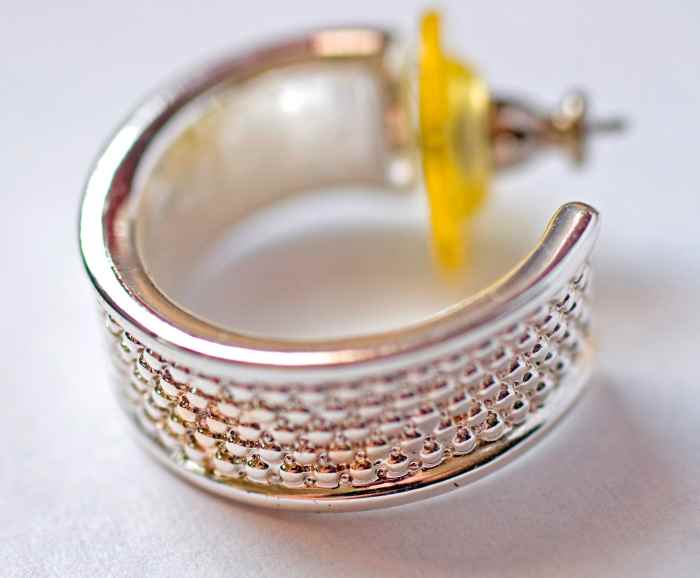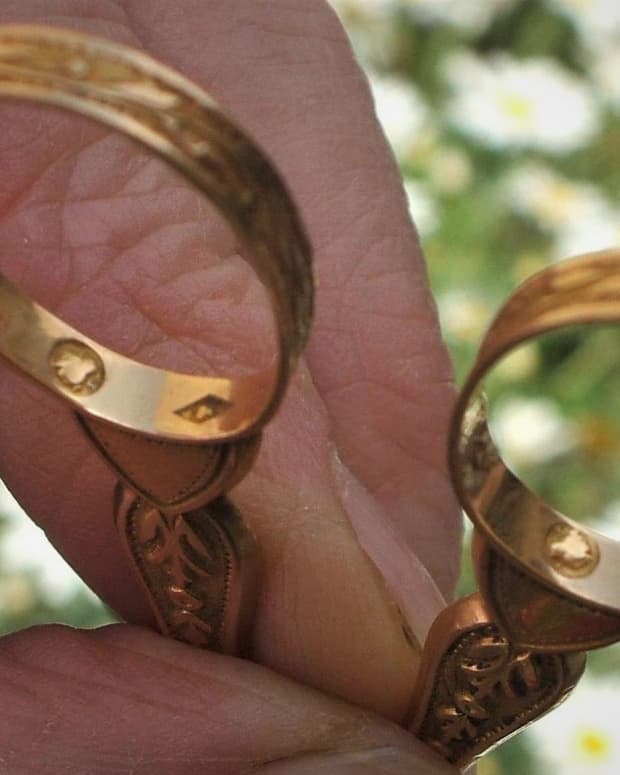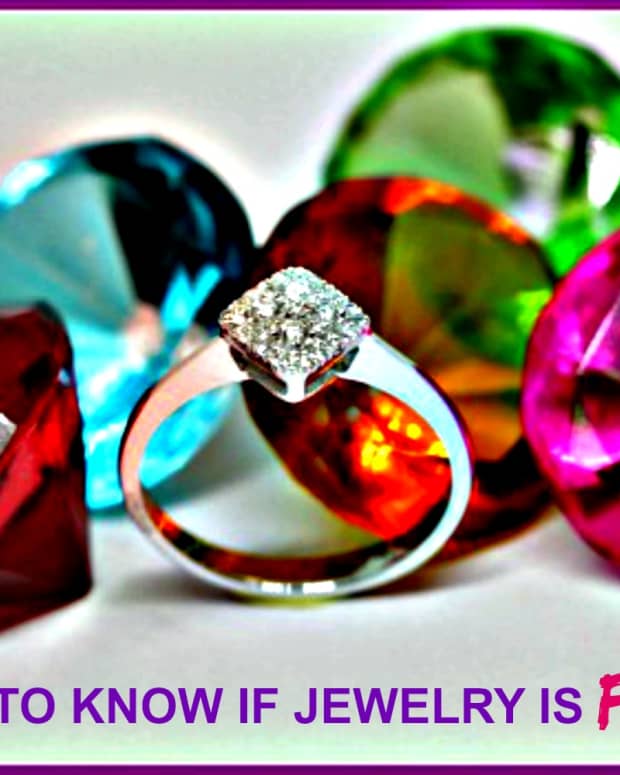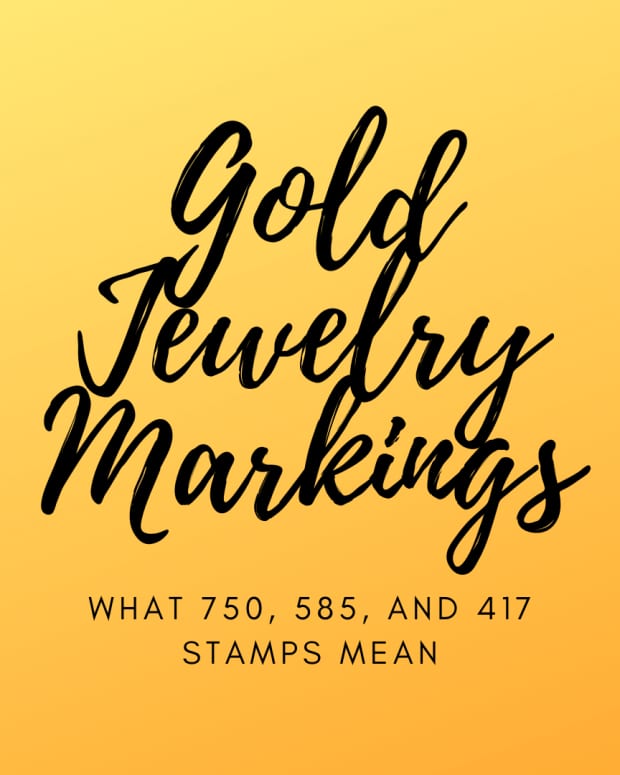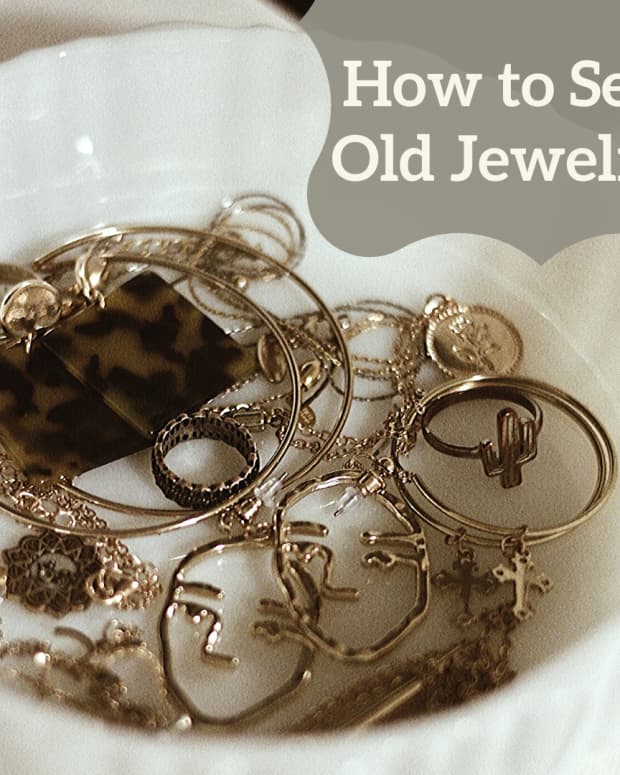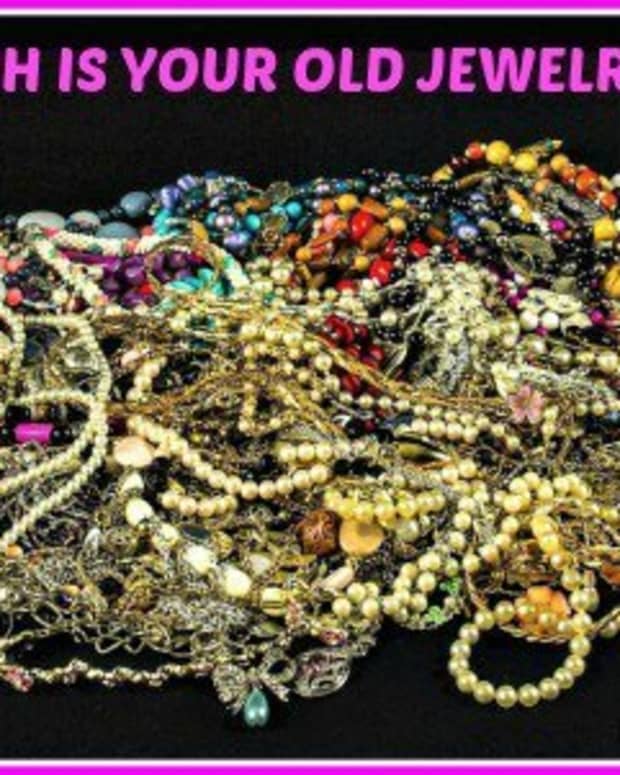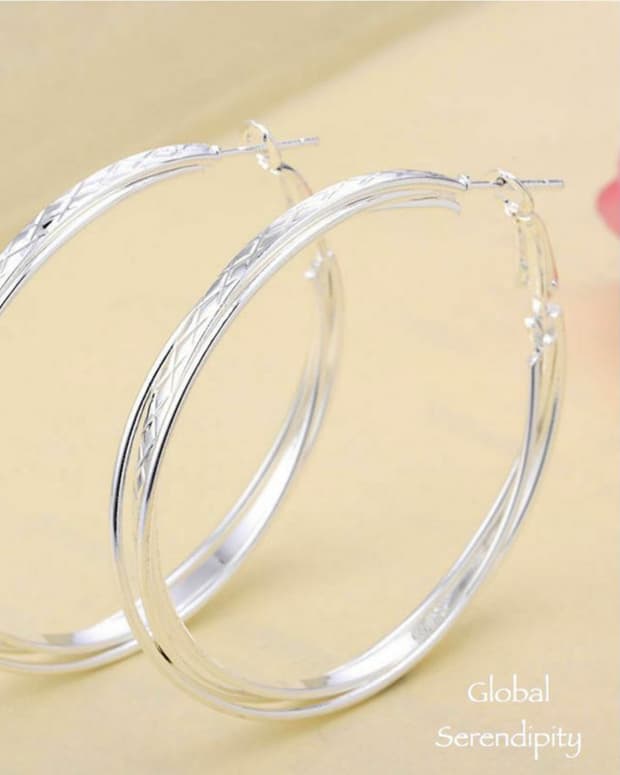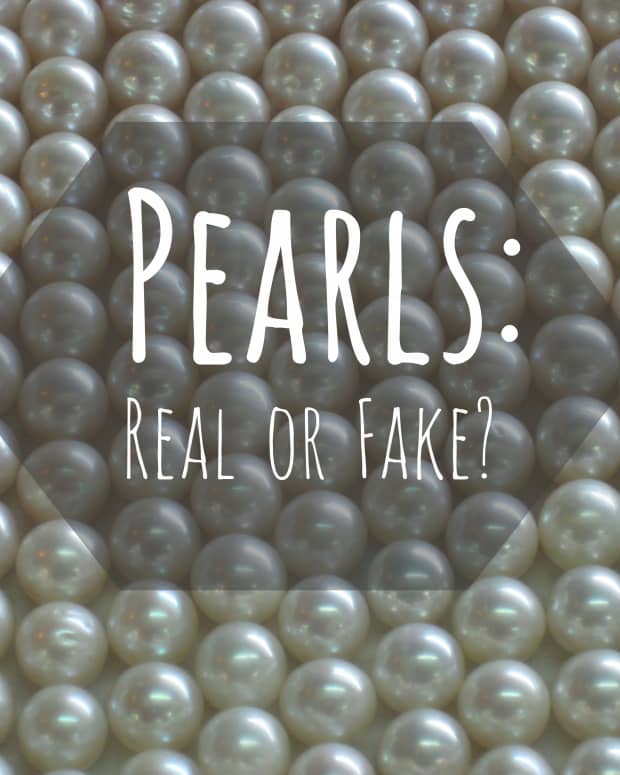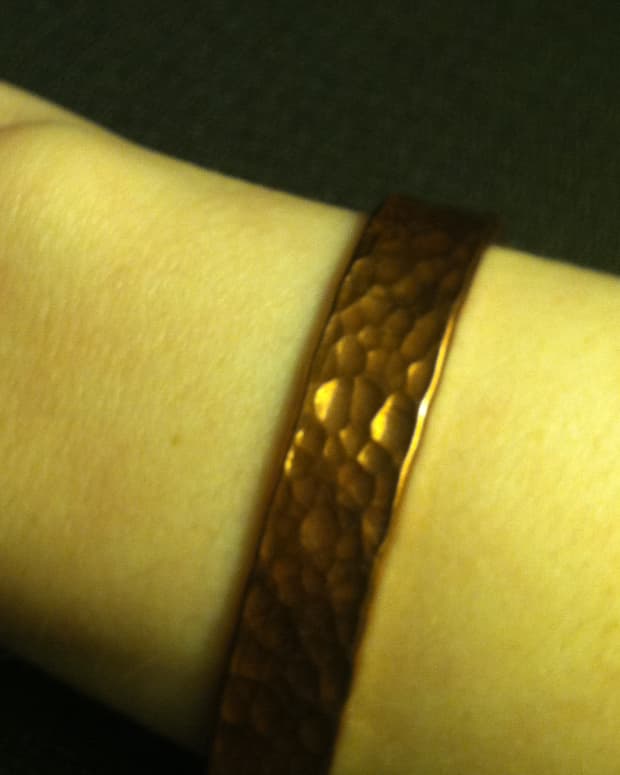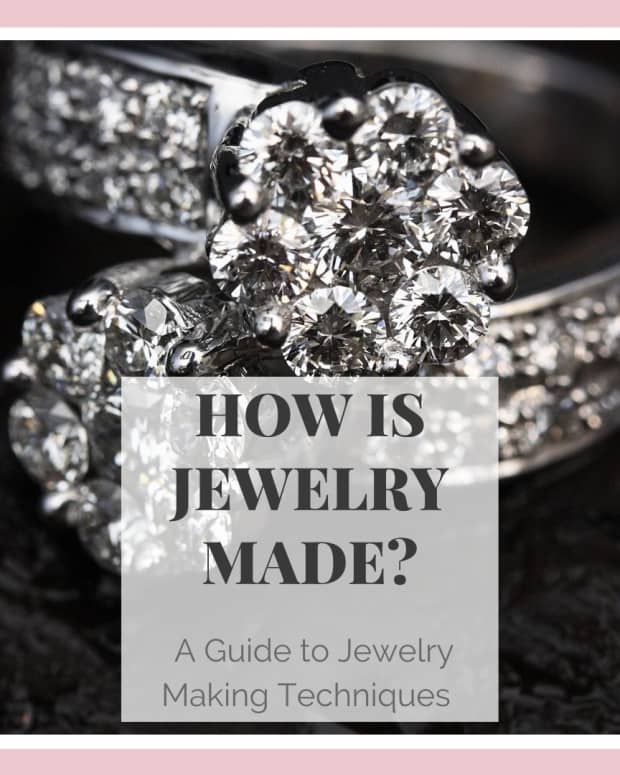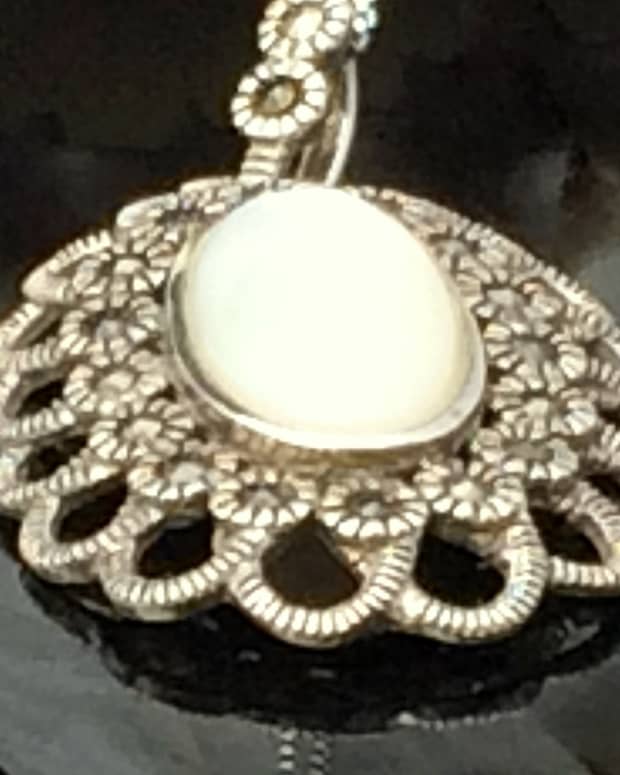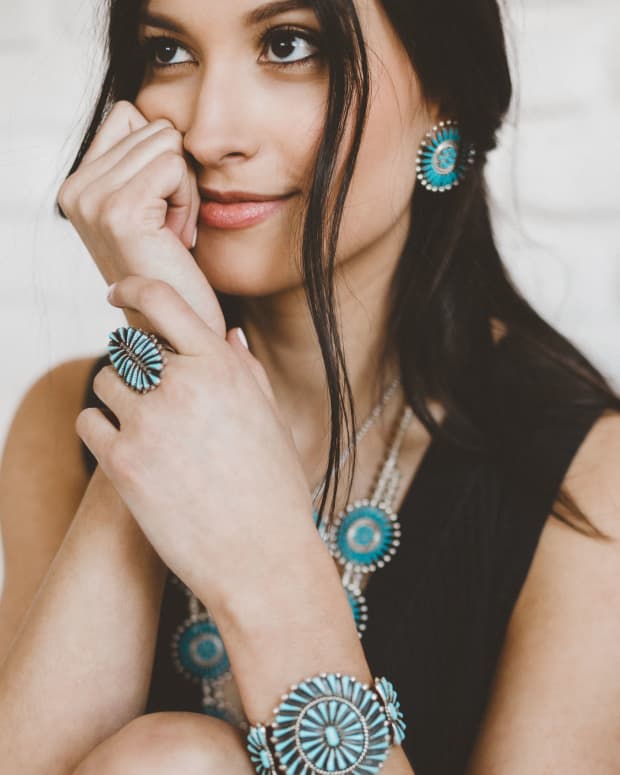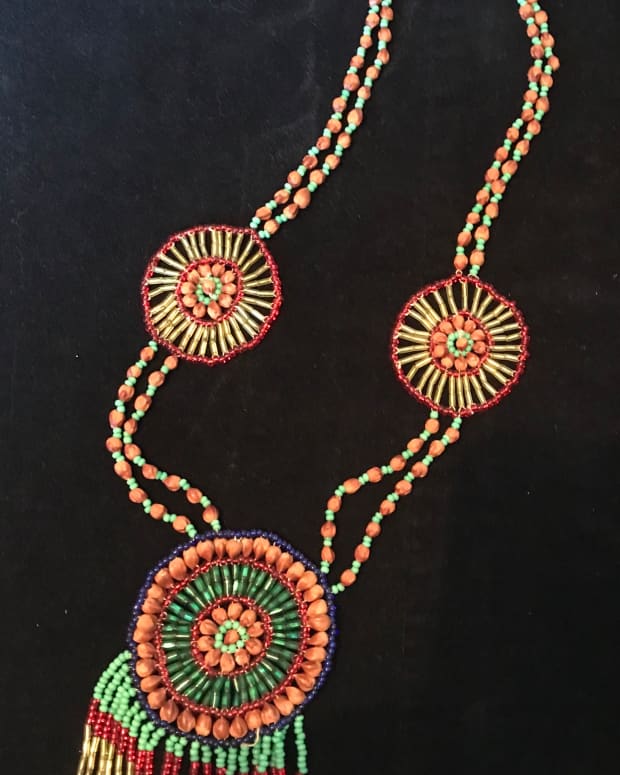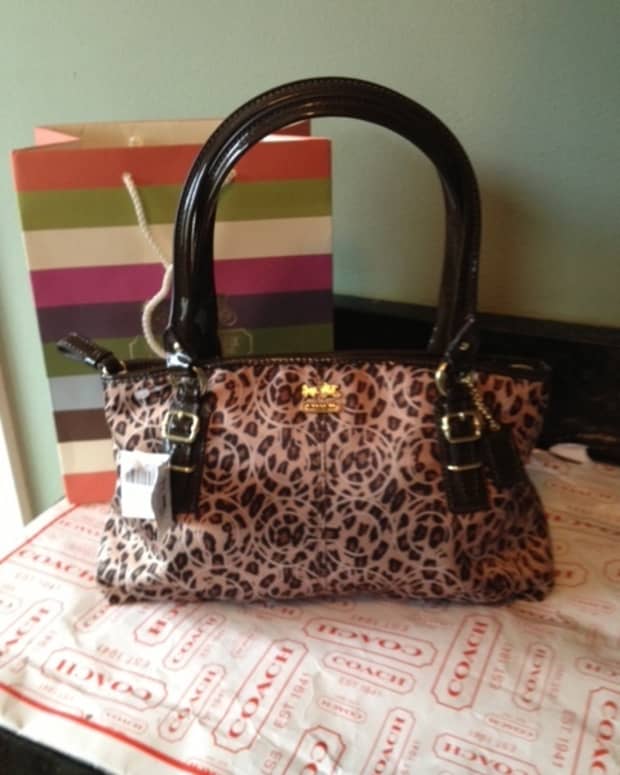How to Tell If Your Old Gold and Silver Jewelry Is Real
Lew is an American expat living in Honduras. A former gold assayer, he is now a photographer and conservator of Central American culture.
At first glance, it is difficult to tell if pieces of vintage jewelry are real gold or plated costume items of no actual metallic value. Some costume jewelry pieces are precious as collector items. Sometimes it is more valuable than gold, but that is not common. There are ways to know the relative value of items without the use of expensive equipment or special expertise. However, there is no way of knowing FOR SURE without a real test made by an experienced technician.
A Few Terms
- Gold Toned: No gold in the item. Just gold colored.
- Gold Plated/Washed/GP: Base metal (copper, brass, pot metal) with a very thin electrically deposited gold coating, sometimes as thin as a few atoms of real gold. It is worthless for its gold content.
- HGE: “Heavy Gold Electroplate." Same as above, but with a little more gold.
- Gold Filled: By law in the US, “gold filled” must have at least twenty percent actual gold content. This is better quality, and it wears and looks like karat gold. Should you ever want to sell the item, it is of no interest to a gold buyer or refiner unless they can get many pounds at a time. They do not wish to deal with eighty percent base metals.
- Karat Gold: “Karat” means the percentage of gold in an item. It is not plated but is the same metallic content throughout. In the US, karat values run from 8K (.333 or 33.3%) through 18K (.750 or 75.0% gold). A few karat gold items will be higher, but by law anything below 8K cannot be called “karat gold."
- Solid Gold: This term does not indicate value or content but says it is the same content throughout the piece. “Solid” is confusing because, like karat gold, it may indeed be hollow.
Next, we’ll explore a few simple indicators that can give at least some idea if a piece is gold or base metals.
1. General Appearance
This is the “Class vs. Trash” test. Because precious metals are expensive, most jewelry makers take a lot more time and care in their fabrication. Step back and take a long look at the piece. Does it give a mental image of richness and class, or is it something for sale on the discount rack?
Here is an example: Below is a simulated-silver earring. It has a very shiny, silvery color and is a good-looking stand-alone piece of jewelry. This is a typical piece of fashion jewelry not meant to deceive anyone as to its metal content.
Below is a sterling silver ring—well-worn, but it still has lots of the original shine. When compared side-by-side, the color difference is obvious. Silver is white, not steel-colored. Although silver polishes to a mirror finish, it still keeps its white color and never shines like a mercury-coated mirror or polished steel. Also, the quality of workmanship just screams “real” even if it weren’t marked.
2. Magnet Test
Some suggest using a magnet to test gold or silver jewelry for authenticity. While any piece that sticks to the magnet is NOT gold or silver, it is not a reliable test. Only ferrous (iron-based) metals are magnetic, and only the most cheaply made fake jewelry consists of coated iron or steel. These are so obvious no test is necessary.
Most simulated gold and silver is made of brass, copper, or other base metals commonly known as “pot metal." These are not attracted to a magnet, so this test won’t work on them. Some pieces are gold-plated sterling silver and may be of value even though they are not karat gold. Be aware, however, that many earring posts, chain clasps, etc., are steel and will be magnetic. If a piece attracts a magnet, make sure it's not just a clasp or post. The rest of the item could be gold.
3. Finish
Because of the cost and value involved, most karat gold and sterling silver jewelry has a better finish than simulations. Also, the finish will hold up even after years of wear.
Gold
Gold, after some wear, will gain a soft glow and feel. This is because it is a soft metal and will soon acquire millions of microscopic scratches, giving it a warm glow, not a harsh shine. This gives old gold a unique and attractive appearance that is hard to mistake. However, good quality gold-filled items may look similar.
Below is a karat gold ring that has gained the soft satin glow. It was cast and finished with care, reflecting the value of its content. Notice the P to the right of the karat stamp. It does not mean “plated” as many people assume, but “plumb." It's a jeweler's term meaning a guarantee by the manufacturer that the item contains at least the amount of gold indicated by the stamp, and never less.
Below, this simulated gold earring was given a shiny lacquered finish. It will look coated and painted forever until the coating cracks and falls away. Side-by-side, there is no comparison.
Gold is often made into thin sheets and stamped, rather than cast into jewelry. It is normally considered far too precious and beautiful to be covered with paint or enamel. Any piece that appears to be gold but is mostly covered with any other material is suspect, such as the piece in the photo below.
Read More From Bellatory
Look at the low quality of the casting below. A lot of plated pot-metal castings are rough. It isn’t worth the time and effort to do a time-consuming job on a very inexpensive piece. There was no finishing done to the back of this piece, being plated over the original casting. Another tell-tale sign is the presence of green specks around the base of the post. This is corrosion of the copper or brass underlying base metal. This is a positive clue that the item is not gold. There is no need to test this one.
Though the finish on the karat gold pin below was left rough, the difference is striking.
4. Wear
Look at the edges, bails, and other wear areas for signs of worn-away plating. Look for corrosion on exposed areas, around posts and hinges. Below is a heavy earring, possibly filled with lead for weight. Notice how the plating on the outside of the coils has worn away, exposing the base metal underneath.
The piece below looked great at first glance, but under scrutiny, green corrosion is obvious. A close look under magnification could make or save a lot of money when buying or selling jewelry.
The green is copper or brass. After this close-up, I can’t imagine anyone wants to wear this.
5. Weight
Some dealers suggest weight as a test for gold. While it's true that gold is heavy, nearly twice the weight of lead, this is not a valid indicator unless you can do an actual specific gravity test. Some gold-colored fashion jewelry is heavy to simulate elemental gold. Much karat gold jewelry is hollow, particularly gold hoop earrings, to appear large and showy. A large hoop may be 14K gold but made very thin and hollow, thus weighing nearly nothing.
Weight is not a valid test for the average person.
6. Markings
All precious metal jewelry sold in the US is supposed to be marked with its gold or silver content. Much, however, is imported, and some is hand-cast, thus looking for a marking is not a fool-proof indicator. There are also lots of fake markings, although I’ve found most to be legit. Chains are usually marked near the clasp, rings on the band, but other items could be most anywhere. Also, depending on the age and origin of a piece, the marking may be hard to decipher.
Examples
Here are a couple examples of markings that are not too clear:
417—This could also be marked 417, 41.7 or 10K. It is 41.7% pure gold.
925—This could be marked 925, 92.5, Sterling, or Ster. It is 92.5% pure silver. Not all marks are easy to read!
The Difficult Ones
Here are a few that just don’t fit the mold:
I had serious hopes for the necklace below. It looked good, satin finish, no corrosion, nothing to say it isn’t gold except it is marked 925. It turned out to be gold-filled sterling silver—still valuable, but not gold.
Below is a nice filigree-style earring. It looks superb at first glance. It wasn’t hard to figure this one out, but it looked so good I kept clinging to the hope for gold. It is thin-plated and lacquered base metal.
The chain below is marked 583 and tested 14K, so its marking is correct. The heart pendant has no mark. The piece looks fantastic and I so much wanted it to test real. It did. This pendant is 14K even though it says nothing. Sometimes they turn out OK!
Be a Careful Buyer and Seller
Precious metals are exciting and fun. If you’re buying a jewelry item, you MUST be very careful if you’re not getting it from a reputable dealer. If you’re selling, it helps to have an idea of the quality of your items and the approximate gold or silver content. I hope this gives you an idea of what may or may not be of value.
As an occasional gold buyer, I see a lot of fashion and costume jewelry. Much of it is beautiful, but it’s difficult to tell someone that their grandmother’s favorite jewelry is of value only to a collector.
Comments
amandabur on August 03, 2019:
I was wondering how much a ring is that is 24 karat gold that has two diamonds and inside of it says 24 Karat Limited and has an infinity sign I think or something that looks like that and either is a ruby or a stone like that it looks like the one at the top of your page
Hafeez Ahmad on May 16, 2019:
Nice post i like your post.
Lew Marcrum (author) from Ojojona, Francisco Morazán, Honduras on February 18, 2019:
Hi, John. Sorry, but I have to say I've never seen that mark. It could mean a bit over 18K, or maybe an Italian purity mark, or a maker's mark, or who knows what. I tried to research it also, but my own curiosity got me nowhere.
If it's remarkably heavy for its size, I'd take it to a jeweler and let them decide just what you have. You will know in five minutes, and it probably won't cost you anything.
Sorry I can't be of more help, but good luck.
John on February 18, 2019:
What is 777 on gold necklace/bracelet


